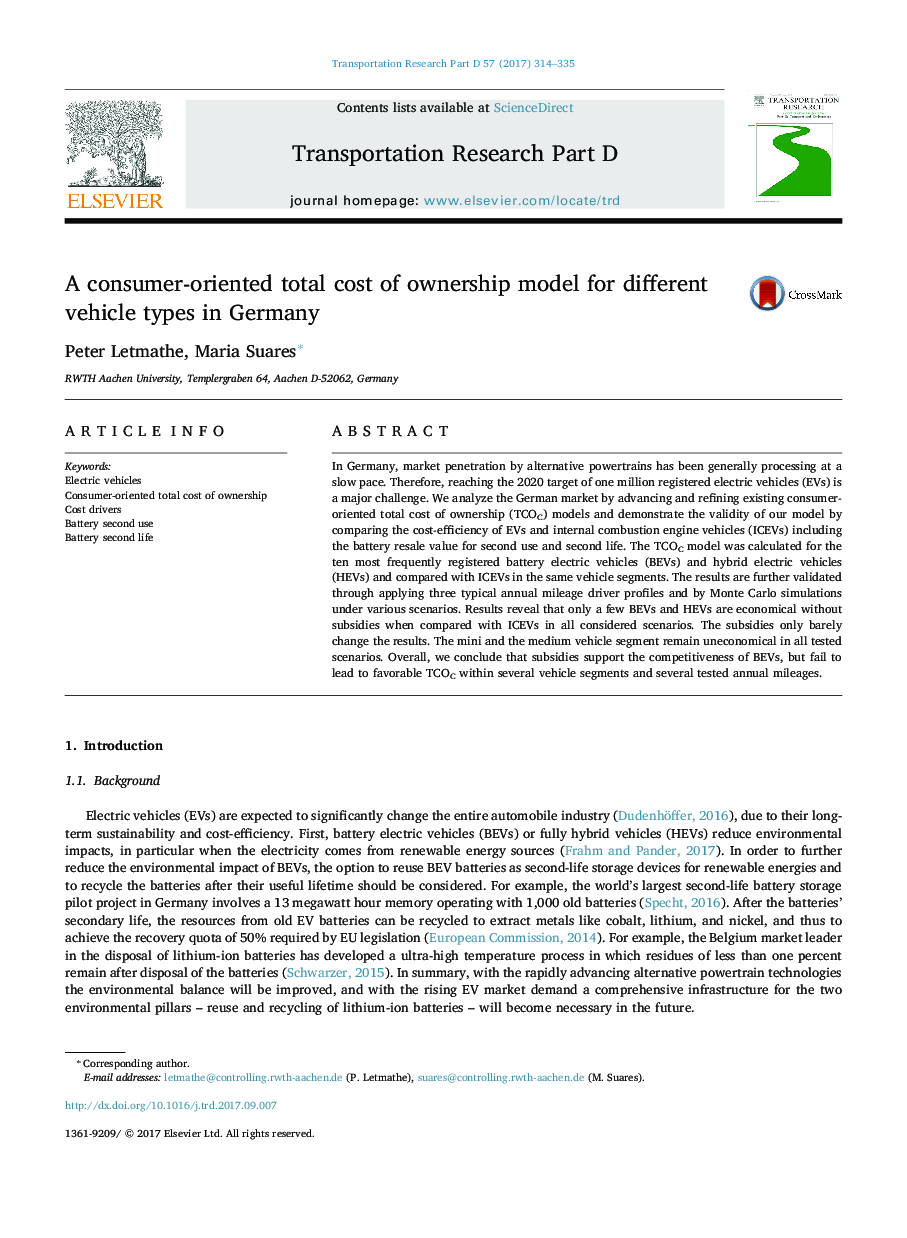| Article ID | Journal | Published Year | Pages | File Type |
|---|---|---|---|---|
| 5119319 | Transportation Research Part D: Transport and Environment | 2017 | 22 Pages |
Abstract
In Germany, market penetration by alternative powertrains has been generally processing at a slow pace. Therefore, reaching the 2020 target of one million registered electric vehicles (EVs) is a major challenge. We analyze the German market by advancing and refining existing consumer-oriented total cost of ownership (TCOC) models and demonstrate the validity of our model by comparing the cost-efficiency of EVs and internal combustion engine vehicles (ICEVs) including the battery resale value for second use and second life. The TCOC model was calculated for the ten most frequently registered battery electric vehicles (BEVs) and hybrid electric vehicles (HEVs) and compared with ICEVs in the same vehicle segments. The results are further validated through applying three typical annual mileage driver profiles and by Monte Carlo simulations under various scenarios. Results reveal that only a few BEVs and HEVs are economical without subsidies when compared with ICEVs in all considered scenarios. The subsidies only barely change the results. The mini and the medium vehicle segment remain uneconomical in all tested scenarios. Overall, we conclude that subsidies support the competitiveness of BEVs, but fail to lead to favorable TCOC within several vehicle segments and several tested annual mileages.
Keywords
Related Topics
Life Sciences
Environmental Science
Environmental Science (General)
Authors
Peter Letmathe, Maria Suares,
